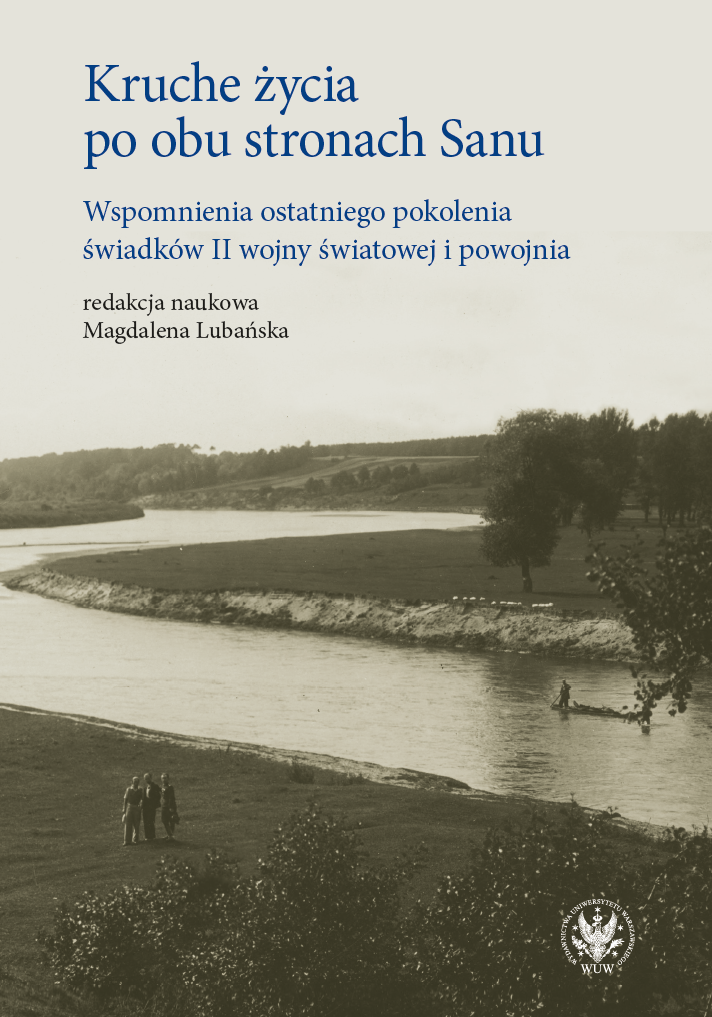Życie religijne społeczności mieszanych obrządkowo we wspomnieniach mieszkańców powiatów jarosławskiego i przeworskiego
Religious Life of Bi-Ritual Communities in the Memories of the Inhabitants of Jarosław and Przeworsk Districts
Author(s): Zofia Brola
Subject(s): Anthropology, Customs / Folklore, Cultural Anthropology / Ethnology, WW II and following years (1940 - 1949), Post-War period (1950 - 1989)
Published by: Wydawnictwa Uniwersytetu Warszawskiego
Keywords: Greek Catholics; Roman Catholics; Subcarpathia; religious life; memory; rite; World War II; borderland
Summary/Abstract: The subject of this article is the memory of religious life in bi-ritual communities. Its basis is ethnographic fieldwork conducted in 2019–2020 in the districts of Jarosław and Przeworsk. This area was ethnically diverse before 1947. The oldest residents of this region of Poland still recall in their accounts the religious life as being shared between Greek Catholic and Roman Catholic churches. Participation in religious practices other than those associated with formal rite affiliation was determined primarily by neighbourhood and family ties, but also by the greater availability of Greek Catholic churches. This indicates the ambiguity of the links between ethnic identity, rite affiliation and the role of participation in religious ceremonies. This ambiguity is the main focus of my interest. I am interested in whether interviewees remember religious practices as distinctly Greek or Roman Catholic or as transcending rigid ritual divisions, and also how these practices are perceived today, how my interviewees talk about them, and what factors influence how the memory of the borderland is created. The memories of religious life in the 1930s and 1940s presented in the article are recalled by interviewees in the context of the inter-ethnic borderland neighbourhood and the events of World War II and the postwar period. My interlocutors mention particularly often the double celebration of religious holidays, such as Christmas and Easter, which was cited as an example of good neighbourly relations. This also testifies to the dual religious competencies characteristic of borderlands, and the existence of a strategy of coexistence. However, the ambiguity of the relationship between ethnic identity, formal religious affiliation and the role of participation in religious practices is most clearly seen in the recollections of the attendance of those described as Poles and Roman Catholics in Sunday services at the Greek Catholic church. During the fieldwork, these categories and their interrelationships seemed, on the one hand, very ambiguous, while on the other hand, their present-day emic understanding made them somewhat related. The article is an anthropological attempt to clarify the complexity of the described phenomena, which is related not only to the complicated social relations in the borderland; it also aims to describe them from today’s perspective. In addition to the key categories of memory and borderland in interpreting the field material, it is important to look at interreligious relations in a diachronic perspective. The religious life and neighbourly relations in the borderland described by the interviewees had their origins in the centuries-old processes of shaping borderland interethnic or interreligious relations. Historical processes also affect how my interviewees’ memories are formed.
- Page Range: 103-128
- Page Count: 26
- Publication Year: 2024
- Language: Polish
- Content File-PDF

